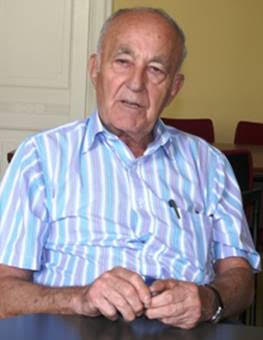
THE VOICE OF INTERNATIONAL LITHUANIA
|
VilNews has its own Google archive! Type a word in the above search box to find any article.
You can also follow us on Facebook. We have two different pages. Click to open and join.
|
Featured black
- Posted by - (0) Comment
VilNews had 100.000 visits in 6 months!
VilNews has been online for a little over six months now. When we started, our goal was to reach 100 000 visits in ONE year. Experts thought we were kidding. The fact is that we reached the target in just six months!
Thanks to you, dear readers!
Among the things we're going to focus on this autumn and winter, is to tell you more about this nation's relations with other countries around the world. For better or worse. Open, forthright talks will still be our standards.
Please write us with your ideas and comments!
The illustrations below show some characteristics of the nations we will cover, things that make them known here, presented in Lithuania’s flag colours.
 ARTICLE NO. 1 HUNGARY |
 ARTICLE NO. 2: ITALY |
 ARTICLE NO. 3: KARAIMS |
|
 ARTICLE NO. 4: DENMARK |
 ARTICLE NO. 5: JAPAN |
 ARTICLE NO. 6: CANADA |
|
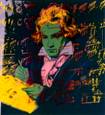 ARTICLE NO. 7: ARTICLE NO. 7:GERMANY |
 ARTICLE NO. 8: CHINA |
 ARTICLE NO. 9: INDIA |
|
 ARTICLE NO. 10: SWEDEN |
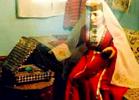 ARTICLE NO. 11: TATARS |
 ARTICLE NO. 12: USA |
|
 ARTICLE NO. 13: RUSSIA |
 ARTICLE NO. 14: BELARUS |
 ARTICLE NO. 15: ICELAND |
|
 ARTICLE NO. 16: TURKEY |
|
 ARTICLE NO. 18: THE UK |
|
 ARTICLE NO. 19: NORWAY |
 ARTICLE NO. 20: POLAND |
 ARTICLE NO. 21: FRANCE |
|
|
|
ARTICLE NO. 22: THE LITVAKS (LITHUANIAN JEWS) |
||
Lithuania has an amazing 700-year history as an international melting pot. This has been especially evident since 1323, the year Grand Duke Gediminas founded Vilnius as Lithuania’s capital city and immediately decided to invite merchants, craftsmen, bankers, farmers, and soldiers from all Europe to come to the new capital, guaranteeing all freedom of beliefs and good working conditions. Vilnius became international, though with less of German or Scandinavian influence, as one could expect, rather influenced by Italy and Mediterranean ideas – greatly different from the other two Baltic capitals where Hanseatic influence became dominant.
VilNews will over some time this autumn publish articles about impacts of foreign nations and cultures here. We also welcome you, dear readers, to share with us information you may have about ‘foreign footprints in Lithuania’.
CLICK HERE TO READ ON WHITE BACKGROUND…
- Bookmark :
- Digg
- del.icio.us
- Stumbleupon
- Redit it
- Posted by - (2) Comment
VilNews had 100.000 visits in 6 months!
VilNews has been online for a little over six months now. When we started, our goal was to reach 100 000 visits in ONE year. Experts thought we were kidding. The fact is that we reached the target in just six months!
Thanks to you, dear readers!
Among the things we're going to focus on this autumn and winter, is to tell you more about this nation's relations with other countries around the world. For better or worse. Open, forthright talks will still be our standards.
Please write us with your ideas and comments!
The illustrations below show some characteristics of the nations we will cover, things that make them known here, presented in Lithuania’s flag colours.
 ARTICLE NO. 1 HUNGARY |
 ARTICLE NO. 2: ITALY |
 ARTICLE NO. 3: KARAIMS |
|
 ARTICLE NO. 4: DENMARK |
 ARTICLE NO. 5: JAPAN |
 ARTICLE NO. 6: CANADA |
|
 ARTICLE NO. 7: ARTICLE NO. 7:GERMANY |
 ARTICLE NO. 8: CHINA |
 ARTICLE NO. 9: INDIA |
|
 ARTICLE NO. 10: SWEDEN |
 ARTICLE NO. 11: TATARS |
 ARTICLE NO. 12: USA |
|
 ARTICLE NO. 13: RUSSIA |
 ARTICLE NO. 14: BELARUS |
 ARTICLE NO. 15: ICELAND |
|
 ARTICLE NO. 16: TURKEY |
|
 ARTICLE NO. 18: THE UK |
|
 ARTICLE NO. 19: NORWAY |
 ARTICLE NO. 20: POLAND |
 ARTICLE NO. 21: FRANCE |
|
|
|
ARTICLE NO. 22: THE LITVAKS (LITHUANIAN JEWS) |
||
Lithuania has an amazing 700-year history as an international melting pot. This has been especially evident since 1323, the year Grand Duke Gediminas founded Vilnius as Lithuania’s capital city and immediately decided to invite merchants, craftsmen, bankers, farmers, and soldiers from all Europe to come to the new capital, guaranteeing all freedom of beliefs and good working conditions. Vilnius became international, though with less of German or Scandinavian influence, as one could expect, rather influenced by Italy and Mediterranean ideas – greatly different from the other two Baltic capitals where Hanseatic influence became dominant.
VilNews will over some time this autumn publish articles about impacts of foreign nations and cultures here. We also welcome you, dear readers, to share with us information you may have about ‘foreign footprints in Lithuania’.
- Bookmark :
- Digg
- del.icio.us
- Stumbleupon
- Redit it
How many crosses on ‘Hill of Three Crosses’?
- Posted by - (1) Comment
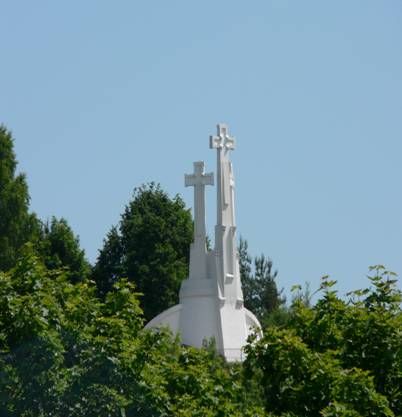
Photo: Wikipedia.org.
By KR Slade
The hill behind the castle tower in the Old Town of the city of Vilnius--the capital of Lithuania, is called ‘The Hill of Three Crosses’. So, how many crosses are on the Hill of Three Crosses ? Six ! Or nine, if you count shadows . . .
In the 14th century, according to legend, pagans killed seven Franciscan monks on this hill. Three monks were hung on the hill, and four were thrown in the river. Three wooden crosses were erected on this hilltop in the 17th century. Thus, the hill got its name.
In 1916, before the first Republic of Lithuania (1918-1939), the wooden crosses were replaced with an ensemble of three, more monumental, reinforced-concrete crosses. They were hollow, about two feet square and about three inches thick. The cross-arms span about eight feet; the height is about eighteen feet. The three-dimensional relief faces reflect light and shadow.
In 1950, the Soviets blew-up and buried the three concrete crosses, which are now placed on the ground just below the final summit climb of the hill. The old, raw concrete crosses are in-tact, but broken at their bases that expose their steel reinforcement rods . The twisted steel rods evidence an amount of force used in their attempted ruin. Amazingly, they were not completely destroyed. They remain now triumphant, on the ground, the paint long-since worn away by weather, neatly displayed on a grassy presentation, about fifty feet from the summit. The three recumbent crosses, still working in their retirement, make a resurrected statement of faith.
The newer three crosses, which since 1989 crown the hilltop vista, were constructed according to the previous general plans. But, there are visible differences in the frontal surfaces of the older and newer structures. In 1991, Soviets here became extinct.
I had mentioned to a local friend that I wanted to go to the Hill of the Three Crosses. He replied, “Why? It’s a hill. With three crosses. You can see the crosses from everywhere in the city.”
No. The Hill of Three Crosses has six crosses. Yes, you can see the three crosses from everywhere in the Old Town. But it’s the other three crosses--the one’s resting on the ground--the old retired ones, which vividly tell the whole story.
- Bookmark :
- Digg
- del.icio.us
- Stumbleupon
- Redit it
How many crosses on ‘Hill of Three Crosses’?
- Posted by - (2) Comment

Photo: Wikipedia.org.
By KR Slade
The hill behind the castle tower in the Old Town of the city of Vilnius--the capital of Lithuania, is called ‘The Hill of Three Crosses’. So, how many crosses are on the Hill of Three Crosses ? Six ! Or nine, if you count shadows . . .
In the 14th century, according to legend, pagans killed seven Franciscan monks on this hill. Three monks were hung on the hill, and four were thrown in the river. Three wooden crosses were erected on this hilltop in the 17th century. Thus, the hill got its name.
In 1916, before the first Republic of Lithuania (1918-1939), the wooden crosses were replaced with an ensemble of three, more monumental, reinforced-concrete crosses. They were hollow, about two feet square and about three inches thick. The cross-arms span about eight feet; the height is about eighteen feet. The three-dimensional relief faces reflect light and shadow.
In 1950, the Soviets blew-up and buried the three concrete crosses, which are now placed on the ground just below the final summit climb of the hill. The old, raw concrete crosses are in-tact, but broken at their bases that expose their steel reinforcement rods . The twisted steel rods evidence an amount of force used in their attempted ruin. Amazingly, they were not completely destroyed. They remain now triumphant, on the ground, the paint long-since worn away by weather, neatly displayed on a grassy presentation, about fifty feet from the summit. The three recumbent crosses, still working in their retirement, make a resurrected statement of faith.
The newer three crosses, which since 1989 crown the hilltop vista, were constructed according to the previous general plans. But, there are visible differences in the frontal surfaces of the older and newer structures. In 1991, Soviets here became extinct.
I had mentioned to a local friend that I wanted to go to the Hill of the Three Crosses. He replied, “Why? It’s a hill. With three crosses. You can see the crosses from everywhere in the city.”
No. The Hill of Three Crosses has six crosses. Yes, you can see the three crosses from everywhere in the Old Town. But it’s the other three crosses--the one’s resting on the ground--the old retired ones, which vividly tell the whole story.
- Bookmark :
- Digg
- del.icio.us
- Stumbleupon
- Redit it
- Posted by - (0) Comment
Small towns in today’s Lithuania:
CRIME AND DECAY

Text: Aage Myhre, VilNews Editor-in-Chief
Every third year or so I go to visit some acquaintances in one of Lithuania's small towns. A few days ago it was again time to see these exceptionally friendly, nice people, and my little family and I were as always very much welcome guests at the home of our small-town friends when we arrived at the gate in front of their house.
When we last were there, in 2007, this was a family and a society that seemed to be in peaceful harmony. A little sleepy, yet idyllic atmosphere prevailed in both the home and the small town at that time.
No longer so.
“Criminal gangs appear to be about to take over in such a way that we, the law-abiding citizens no longer feel safe neither in the streets nor in our homes. Last night, for example, we were out at a restaurant just ten minutes walk from our house. When it was time to go home, it was already dark outside, and as the situation here has become so bad over the past couple of years we dared not walk, we felt we had no other choice than to take a taxi the few hundred meters back to our home. "
She speaks softly, sad and with deep seriousness in her voice as she explains the situation to us, this gentle woman who has lived in this town all her lifetime. Here she gave birth to and raised her now grown children who have given her great grandchildren whom she talks about with great pride in her voice, still expressing deep concerns on how it will be for them to experience an environment like this during their years of childhood and youth.
- Bookmark :
- Digg
- del.icio.us
- Stumbleupon
- Redit it
- Posted by - (2) Comment
Small towns in today’s Lithuania:
CRIME AND DECAY
 |
 |
Many of Lithuania's small towns suffer from decay and increasingly severe crime cases
Text: Aage Myhre, VilNews Editor-in-Chief
Every third year or so I go to visit some acquaintances in one of Lithuania's small towns. A few days ago it was again time to see these exceptionally friendly, nice people, and my little family and I were as always very much welcome guests at the home of our small-town friends when we arrived at the gate in front of their house.
When we last were there, in 2007, this was a family and a society that seemed to be in peaceful harmony. A little sleepy, yet idyllic atmosphere prevailed in both the home and the small town at that time.
No longer so.
“Criminal gangs appear to be about to take over in such a way that we, the law-abiding citizens no longer feel safe neither in the streets nor in our homes. Last night, for example, we were out at a restaurant just ten minutes walk from our house. When it was time to go home, it was already dark outside, and as the situation here has become so bad over the past couple of years we dared not walk, we felt we had no other choice than to take a taxi the few hundred meters back to our home. "
She speaks softly, sad and with deep seriousness in her voice as she explains the situation to us, this gentle woman who has lived in this town all her lifetime. Here she gave birth to and raised her now grown children who have given her great grandchildren whom she talks about with great pride in her voice, still expressing deep concerns on how it will be for them to experience an environment like this during their years of childhood and youth.
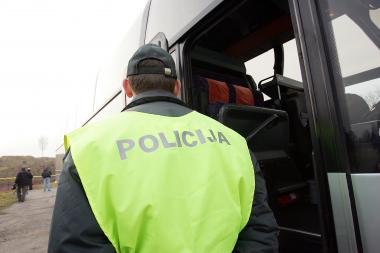
"Worst of all," the woman continues, "is that these criminals seem to no longer worry if they are being seen or discovered. Many break-ins in the houses around here happen in broad daylight, and it seems as if the police no longer have control of anything in our dear village.
A neighbour who came home to his house a few days ago was met outside his own front door by a stranger coming out of the house. ‘What are you doing here,’ our neighbour asked. ’ Well,’ replied the stranger, ‘what I had to do, I've already done.’ When our neighbour went in, he understood what the stranger had meant. The house was just completely stripped of all valuable items."
When I asked her what the police do in cases as the one she had just described, our acquaintance just scoffs. She no longer has respect for the police, judiciary or politicians in this country, she says, and more than suggests that many of them probably get a share of the cake from the many thefts and assaults taking place right in front of their noses.
I have, after we left our acquaintances, been trying to find out if the problems she describes about her hometown could also apply to other towns in this country. The answer is, unfortunately very discouraging, confirming that her hometown is not unique with regard to rapidly increasing crime and lack of respect for law and order.
What can we do to make life for this proud, bright woman and the many other law-abiding people around this great country a little safer and brighter again?
It is not up to me to answer, but both our President and our Prime Minister should take this problem seriously before the situation gets even more out of control.
The cancerous tumour is growing every day that passes...
The visit to our acquaintances in one of Lithuania's many small towns made a strong impression on me. When we drove out of town I saw in a new light the buildings, streets and the few people who were out this late afternoon. I saw that my former somewhat romantic view of this rural town was wrong. Or at least not complete. I saw that many of the houses were in decay and that very little had happened since I first came here 20 years ago.
And when I think about it, isn’t this the situation for the majority of Lithuania's small towns? They have not received their fair share of EU funds or investments that made Vilnius and partly the other major cities flourish.
Heritage is about to be lost. Buildings and outdoor environments disintegrate. People are suffering. Criminal gangs are gaining better footholds.
Is this the Lithuania we want to have? Of course not. But it is now. We, the people care about this country, living here or elsewhere on the globe, must begin to take action. It's all up to us, is it not?
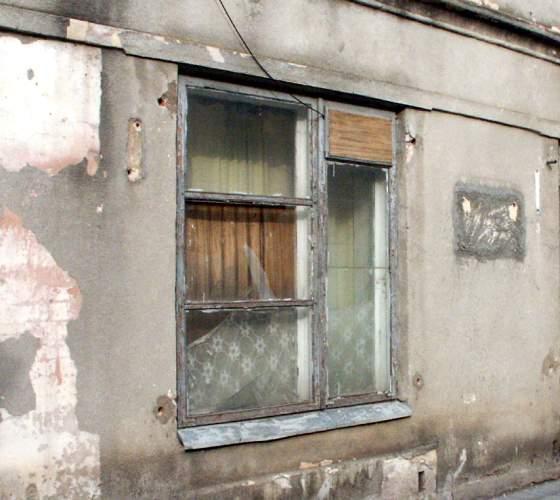
- Bookmark :
- Digg
- del.icio.us
- Stumbleupon
- Redit it
- Posted by - (0) Comment
Because of the Jewish Holocaust during the Second World War Lithuania lost over 90 per cent of the Jewish community. In 1994, 23 September was declared National Memorial Day for the Genocide Victims of the Lithuanian Jews to commemorate the liquidation of the Vilnius Ghetto on that day in 1943. Many events are held to commemorate 23 September in different institutions of Lithuania every year. |
I just want respect
for murdered Jews
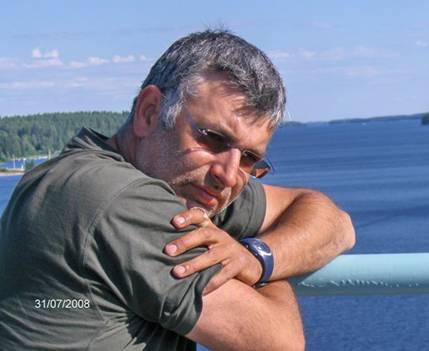
Sergejus Kanovičius
OPINION: By Sergejus Kanovičius
Very recently I looked at the Delfi.lt webpage and could barely hold back the tears watching one of the episodes of Mission Siberia (http://tv.delfi.lt/video/ST5zL0DJ) which aired this year, an interview with Lithuanians who have lived [in Siberia] eight decades now, unable to speak Lithuanian and explaining why they who have lived their entire lives in Siberia see no sense nor opportunity to return to Lithuania…I was saddened because of the tragedy of their lives, but at the same time I was glad that they are alive and healthy.
I remember how one of my best friends, the poet Liudvikas Jakimavicius, used to tell me during long evenings at his farm about the oppressions his family experienced, how his parents shared one cattle wagon with a Jewish boy named Harry, whom everyone called Garik. How Joske who spent the years of exile together with Liudvikas’s family, always used to send packages from far-off Israel with instant coffee and other items unavailable in the dying Soviet empire.
I told Liudvikas about my almost completely butchered family. It was painful for both of us, we empathized with one another and tried to understand the other’s pain and shared our grief until his pain and heartbreak became my pain, and the suffering he and his family experienced became mine as well.
- Bookmark :
- Digg
- del.icio.us
- Stumbleupon
- Redit it
- Posted by - (2) Comment
Because of the Jewish Holocaust during the Second World War Lithuania lost over 90 per cent of the Jewish community. In 1994, 23 September was declared National Memorial Day for the Genocide Victims of the Lithuanian Jews to commemorate the liquidation of the Vilnius Ghetto on that day in 1943. Many events are held to commemorate 23 September in different institutions of Lithuania every year. |
I just want respect
for murdered Jews

Sergejus Kanovičius
OPINION: By Sergejus Kanovičius
Very recently I looked at the Delfi.lt webpage and could barely hold back the tears watching one of the episodes of Mission Siberia (http://tv.delfi.lt/video/ST5zL0DJ) which aired this year, an interview with Lithuanians who have lived [in Siberia] eight decades now, unable to speak Lithuanian and explaining why they who have lived their entire lives in Siberia see no sense nor opportunity to return to Lithuania…I was saddened because of the tragedy of their lives, but at the same time I was glad that they are alive and healthy.
I remember how one of my best friends, the poet Liudvikas Jakimavicius, used to tell me during long evenings at his farm about the oppressions his family experienced, how his parents shared one cattle wagon with a Jewish boy named Harry, whom everyone called Garik. How Joske who spent the years of exile together with Liudvikas’s family, always used to send packages from far-off Israel with instant coffee and other items unavailable in the dying Soviet empire.
I told Liudvikas about my almost completely butchered family. It was painful for both of us, we empathized with one another and tried to understand the other’s pain and shared our grief until his pain and heartbreak became my pain, and the suffering he and his family experienced became mine as well.
If not for Liudvikas, I probably never would have written:
- Amber by the Laptev Sea
- There far far far away
- Not seen from here
- Over mountains over seas
- A lonely man laments
- A lonely seeker of truth
- Dug for what he hadn’t discarded
- Found what he hadn’t sought
- The cold sea laps
- eternal eternal ice
- frightened dreams of childhood
- give me some bread
- and some warmth
- and a little bit of motherland
- frozen to eternity sea
- returns to a son
- the blue scarf of his mother
- and father’s ice frozen boots
- when polar night is over
- the generous Laptev
- on eternal snow
- washes down to his feet
- mama’s amber beads
When I was in sixth grade, I, with hundreds of other boys of Lithuania, went through a selection and was chosen for inclusion in one of the best musical ensembles during the Soviet period, the Azuoliukas choir.
Many years would pass until I found out that when singing famous “Kregzdutes, Kregzdutes” by Balys Dvarionas (who spoke Yiddish perfectly with my dad) will be conducted by that boy from the cattle wagon, who became from Garik to Herman Perelstein.
And again I’m watching that interview from Mission: Siberia. I pose a macabre question to myself and fate: well, why, why is it better sometimes to be assaulted, raped, with destiny destroyed, but alive? Maybe because a living person is like a flower, [it] reaches towards sun and life, tries to blossom under any conditions, even the most inhuman, and tries to stay a human being. Because even when everything is taken away—country, property and a life that took hundreds of years to build—there is that something which remains, but what was taken from the rest of Garik’s family forever: life.
How I wish, how I lust to travel to Paneriai, to hundreds of Lithuanian towns, villages and churchyard settlements and mass graves hidden in their woods with friends, with people who think the same way, with a microphone and a video camera, to knock on the moss and get interviews from all of them.
Red equals brown. A little. Somewhat. Not much. Just a bit. There were two genocides. It is horrifying, an authoress wrote, at the Genocide Museum, at Tuskulenai where there …. murdered… innocent people… This desire to have “a genocide of one’s own” seems foolish to me. Just “borrow” some of the one that left my father with no relatives. So many people who count the murdered place them like weights on a balance. They weigh them. And still so many of my Lithuanian brothers today when they hear the word Holocaust beat their chests and say: Not us, not our responsibility.
Look at that that, I read, these unkosher Lithuanians, they are “freedom of thought police,” “intellectual taliban,” “leftists actively expressing themselves in the public space,” what do they think they’re doing, they dare say the simple truth, that brown does not equal red. Those who on the pyramid of ethnic patriotism vociferously demand “their own” cannot and will not accept this axiom. It would be interesting to watch two lawyers who try to convince one another that rape and homicide are crimes of a single cloth, and so must be judged and punished with the same punishments…
I am always reading: crucify them, crucify—either openly or with a little more reserve—but crucify.
And on the scales where on one side all my butchered family lies, they place on the other side what, Lucas (as if his opinion is the final unassailable word with opportunity for appeal and not to be criticized), Rubin, Stankeras, someone else, even using families who witnessed the terrors of Soviet crimes, eyes are counted and NKVD victims are placed [on the scales]. As if the scales would balance because of that pain and one could say, woohoo, now we, we too have OUR OWN genocide like you, so stop trying to interfere with your pain and suffering.
We, sorry, do not interfere. We, Jews, in general demand nothing in this sense and count nothing, we don’t write articles with horrifying examples of those of us who were rescued or did the rescuing in singles, because that would be nothing more than speculation [in the negative economic sense]. We were born AFTER THAT—with a wound that will not heal. And all we would like is that, out of politeness at least if not out of elementary human sympathy and compassion, they stop disturbing our victims and their memory and stop putting them on the scales. True, they will also put the Museum of Genocide Victims on the scales. The one where to our pain because of political reasons space was not found [for the Holocaust]. The only thing this building still needs is a sign: “600 meters to Jewish genocide” [reference to the only Holocaust museum in Lithuania, the Green House, hidden not far from the so-called Genocide Museum].
There, some activists say, you can find that, the other, theirs, not our genocide. But this is ours. Don’t touch it and don’t wave Jews around here. The heads of the Museum of Genocide Victims have even revealed that they came to an agreement with the Tolerance Center and Gaon Museum on novel new kinds of exchange: they don’t exhibit our genocide, we don’t exhibit theirs. Is that surprising? Is it surprising that such exchanges satisfy the leadership of the Tolerance Museum? And in some eyes, the scales again are balanced. Disgusting. Painful.
Later on the same scales they will place Rwanda, Cambodia (for some reason they’ve forgotten to mention this yet), Sudan, Katyn and ten other “examples” which while not doing so directly nonetheless say, your genocide is ‘sh…t.” Stankeras is not interesting as Stankeras. Stankeras is an expression of this red=brown and its logical product. He, like Azubalis on citizenship, said what many in this “I want my own genocide” hysteria truly think. Someone there, on the manor, [i.e., among the elite] decided that the nation and its patriotism needs to have “its own genocide.” So that without insulting anyone, without hiding historical facts, without meeting opposition from honest people, it is possible to expect Jews will accept this depreciation of their pain appropriately. Those Jews are inappropriate. Or maybe they’re appropriate. After all, if you think about it and admit it to yourself, it’s a miracle that they survived that meat grinder at all. They didn’t come back from Paneriaion trains, they didn’t rise up from the gas chambers and become living children again and didn’t live out what is called life, even if their destinies had been destroyed.
I don’t have objections how any people name their tragedies. I might not agree. But I have no moral right to tell them not to do that, to place their victims on scales and to become one of many who find it so much fun to take up the accounting of death.
I just want respect for murdered Jews. I want respect for the Lithuanians who rescued them. I don’t want any Lithuanian to beat his chest and publicly or privately declare “mea culpa.” Neither I nor you are to blame for what happened. You as I, as I and Liudvikas Jakimavicius, have only one duty: to judge what happened, thus taking responsibility not for crimes not committed by us, but responsibility so that our children and their children won’t have to write a multitude of articles and take up thankless work: weighing the pain of others. Lord, give eternal rest to the dead. We—Jews and Lithuanians—don’t need anything more than that.
And we don’t need to invite one another to the Museum of Genocide Victims, to Paneriai, or to Auschwitz; if we don’t have an inner need in ourselves to sympathize and forgive, no field trips will help. We are in the marketplace of the accountants of death where ever more often on the goods table of historical revisionism we hear the voice: “We had more!!! Our Self-Defense Battalions were great! Long live the heroes of the LAF!”
We can’t erase from history, no matter how paradoxical it is, the fact that a Lithuanian Jew on a cattle car on the way to Siberia and a Jew left in Lithuania did not have the same prospects and could not have had the same prospects.
One train with cattle cars travelled toward the vastnesses of Siberia in 1941. A few years later a train with Jewish children from Hungary moved out. One stopped at Ukhta. The other at Auschwitz. I tried to get an interview from those Hungarian children. Unfortunately, I was not able to.
I am extraordinarily thankful to fate that it didn’t leave Garik in Lithuania… The Azuoliukas [choir] sang so beautifully…
All attempts to discuss brown equal red with my butchered family seem to be totally senseless to me.
Mikhail Bulgakov said: “Manuscripts don’t burn.” In Lithuania’s case the Holocaust manuscript has not burned away, it is written in my large family’s blood.
So let there be two genocides if it helps Lithuania to overcome the deep national identity crisis. But if there are two genocides, two museums and two, rather than one pain and one, rather than two responsibilities for Lithuania of today and tomorrow, we will read new Stankerases, we will shrug our shoulders and we will wonder how in the world it is that we are so weak that even after twenty years of free thought and historical research what our uniform relationship is with the tragedy that took place in Lithuania which wiped off the map an entire ethnos—it is incredible that to the present day we are discussing this in [editorial opinion pieces]. I usually remain silent or silently pray at mass graves. Can’t we simply recognize that we are being dishonest to ourselves and others?
- Ghetto
- We came in the thousands
- We left in thousands
- Only single individuals returned
- Everyone lamented
- The Gesheft of centuries
- Children and the Talmud
- Were piled up at Paneriai
- And we sighed for the last time
- O beautiful my motherland
- Children of the Grand Duke
- The next day read loudly
- And Vilnius, and Vilnius
- And Vilnius finally has a ghetto
This contribution is an authorized adapted translation from:http://www.bernardinai.lt/straipsnis/2010-12-14-sergejus-kanovicius-interviu-is-paneriu-duobiu-arba-sveriame-mirti/54606
- Bookmark :
- Digg
- del.icio.us
- Stumbleupon
- Redit it
Is there a new role for Lithuanian-Americans?
- Posted by - (1) Comment
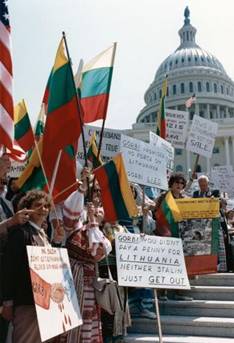
Members of 'The Lithuanian-American Community
protest outside the Capitol in Washington in 1990, against
Soviet President Gorbachev's policy regarding the
Baltic States. They played a real role by then.
Is there still a role for them to play?
Photo: UPI, Joe Mahoney.
Lithuanian Americans have always found themselves as defenders of the ideas and ideals of both Lithuania and their adopted country, the United States. During the years of Soviet occupation, Lithuanian Americans played a key role in keeping hope alive. Without the actions of Lithuanian Americans, there would not have been a non-recognition policy, and without the hard work of so many Lithuanian Americans past and present that policy would not have served as the beacon of hope it was for Lithuanians in Lithuania.
Not surprisingly, many Lithuanian Americans concluded at the time of the end of Soviet occupation that their job was completed. After all, what they had done for more than 50 years was little short of heroic. And there was the additional and for some extremely painful fact that many in Lithuania itself felt that the diaspora had made its contribution but that Lithuanian-Lithuanians must now take the lead in the future development of their country.
As a result, many Lithuanian Americans have ended or at least reduced their participation in public life. Now, this withdrawal from public life threatens to become a stampede. Lithuania has become a member of NATO, a step that many have seen as the final guarantee of its independence and security. And Lithuania has joined the European Union, another step toward the reintegration of Lithuania into the European world from which it was so brutally wrenched by the Soviet government in 1940.
But these events should not be the “end of history”, there are many serious challenges ahead both for Lithuania and for Lithuanian Americans, all of us who care about Lithuania may have to work harder than we ever did in the past.
The Soviet occupation of the Baltic countries continues to cast a shadow on the political calculations in Moscow and in the minds of many Lithuanians, and because this is so, Lithuanian Americans have a special role to play in dispelling both these shadows.
I don’t think it is an exaggeration to say that had there not been a Lithuanian diaspora, the Soviet government might have survived far longer than it did. Now, it is imperative that Lithuanian Americans again play the key role in making sure that Lithuania will not suffer because of such actions. And that includes not only telling the West but making sure that people in Lithuania understand what is at stake as well.
Lithuanian Americans have played a key role in fighting the hangover of the communist past, and we can all be proud of the role that Lithuanian Americans have played. I believe that Lithuanian Americans can make a significant contribution also to the future. But we need to recognize that the threats to that future are real and that Lithuanian Americans need to act as they have in the past.
Egle Dudenas
Egle Dudenas wrote this article in 2005, but her points are as good today as they were by then. VilNews is hereby inviting our readers to comment on this important topic.
Click here if you wish to read this article on white background
- Bookmark :
- Digg
- del.icio.us
- Stumbleupon
- Redit it
Is there a new role for Lithuanian-Americans?
- Posted by - (5) Comment

Members of 'The Lithuanian-American Community
protest outside the Capitol in Washington in 1990, against
Soviet President Gorbachev's policy regarding the
Baltic States. They played a real role by then.
Is there still a role for them to play?
Photo: UPI, Joe Mahoney.
Lithuanian Americans have always found themselves as defenders of the ideas and ideals of both Lithuania and their adopted country, the United States. During the years of Soviet occupation, Lithuanian Americans played a key role in keeping hope alive. Without the actions of Lithuanian Americans, there would not have been a non-recognition policy, and without the hard work of so many Lithuanian Americans past and present that policy would not have served as the beacon of hope it was for Lithuanians in Lithuania.
Not surprisingly, many Lithuanian Americans concluded at the time of the end of Soviet occupation that their job was completed. After all, what they had done for more than 50 years was little short of heroic. And there was the additional and for some extremely painful fact that many in Lithuania itself felt that the diaspora had made its contribution but that Lithuanian-Lithuanians must now take the lead in the future development of their country.
As a result, many Lithuanian Americans have ended or at least reduced their participation in public life. Now, this withdrawal from public life threatens to become a stampede. Lithuania has become a member of NATO, a step that many have seen as the final guarantee of its independence and security. And Lithuania has joined the European Union, another step toward the reintegration of Lithuania into the European world from which it was so brutally wrenched by the Soviet government in 1940.
But these events should not be the “end of history”, there are many serious challenges ahead both for Lithuania and for Lithuanian Americans, all of us who care about Lithuania may have to work harder than we ever did in the past.
The Soviet occupation of the Baltic countries continues to cast a shadow on the political calculations in Moscow and in the minds of many Lithuanians, and because this is so, Lithuanian Americans have a special role to play in dispelling both these shadows.
I don’t think it is an exaggeration to say that had there not been a Lithuanian diaspora, the Soviet government might have survived far longer than it did. Now, it is imperative that Lithuanian Americans again play the key role in making sure that Lithuania will not suffer because of such actions. And that includes not only telling the West but making sure that people in Lithuania understand what is at stake as well.
Lithuanian Americans have played a key role in fighting the hangover of the communist past, and we can all be proud of the role that Lithuanian Americans have played. I believe that Lithuanian Americans can make a significant contribution also to the future. But we need to recognize that the threats to that future are real and that Lithuanian Americans need to act as they have in the past.
Egle Dudenas
Egle Dudenas wrote this article in 2005, but her points are as good today as they were by then. VilNews is hereby inviting our readers to comment on this important topic.
- Bookmark :
- Digg
- del.icio.us
- Stumbleupon
- Redit it
- Posted by - (1) Comment
Remembering
Darius and Girenas

The American-Lithuanian pilots, Steponas Darius (1896-1933) and Stasys Girenas (1893-1933) attempted in the year 1933 to beat Charles Lindberg’s non-stop distance record across the Atlantic by flying from New York City to Kaunas, then the temporary capital of Lithuania.
Their plane, Lituanica, was an Bellanca CH-300 Pacemaker airplane. After successfully flying 6,411 km, it crashed, 650 km from its destination, Kaunas. Both pilots were killed.
Movie clip from the crash scene.
- Bookmark :
- Digg
- del.icio.us
- Stumbleupon
- Redit it
- Posted by - (5) Comment
Remembering
Darius and Girenas

The American-Lithuanian pilots, Steponas Darius (1896-1933) and Stasys Girenas (1893-1933) attempted in the year 1933 to beat Charles Lindberg’s non-stop distance record across the Atlantic by flying from New York City to Kaunas, then the temporary capital of Lithuania.
Their plane, Lituanica, was an Bellanca CH-300 Pacemaker airplane. After successfully flying 6,411 km, it crashed, 650 km from its destination, Kaunas. Both pilots were killed.
Movie clip from the crash scene.
Steponas Darius was born at Rubiske, Lithuania in 1896 as Steponas Darasius. His father died while he was young; his mother remarried and the family moved to America in 1907. The family eventually settled in Bridgeport, a Lithuanian neighborhood in Chicago. While growing up, Steponas became quite the sportsman and played a variety of sports, including rugby, football, basketball, baseball, and boxing. In addition, he worked as an errand boy at an aviation store owned by famous aviation pioneer Wright brothers.
During World War I he shortened his surname to Darius, and joined the U.S. Army in 1917. He served valiantly in France and was awarded the “Purple Heart” and the “Great War for Civilization” medals. After returning to Chicago briefly after the War, Darius returned to his homeland Lithuania in 1920, which was fighting for its independence. He joined the Kaunas Military School and was promoted to the rank of lieutenant upon his graduation in 1921. He joined the training squadron of the Lithuaian Air Force in 1922, and participated in the 1923 liberation of Lithuania’s port city of Klaipeda. He served in the Lithuanian Air Force for 5 years, and was promoted to the ranks of flying officer, and flight lieutenant.
Having received a year’s leave from the Lithuanian army Darius left Lithuania in 1927 and returned to the United States to visit his friends and relatives there. On his journey home he witnessed the triumphant celebration for aviator Charles Lindbergh at Le Bourget Airport in Paris. Darius was inspired and determined that he would someday fly a plane from New York to Kaunas.
Upon his return to the United States, Darius earned various pilot’s licenses, including international and transport pilot. He began racing airplanes and also established an aviation company with an American pilot in Indiana. After some mechanical misfortunes, Darius left the firm in 1929 and returned to the Chicago area. He then began working for a Bellanca dealer at Palwaukee Airport north of Chicago. While there he became a pilot and instructor of Commercial aviation, and a master at flying all types of aircraft of his day.
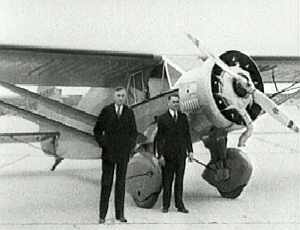
The pilots and their aircraft, Lituanica.
Steponas Darius teamed up with aviator Stasys Girenas in 1932, and the pair formed a flying partnership dedicated to a well-publicized trans-Atlantic flight. Girenas also had a similar background as his partner, having been born in Lithuania, educated in Chicago, and serving in the U.S. Army in World War I. The duo purchased a used Bellanca Pacemaker plane from the Chicago Daily News in 1932, dubbed it the “Lituanica” and modified it for their flight. Money was raised from numerous Lithuanian clubs and organizations to finance their operation.
The duo left Floyd Bennett Airport in New York City headed for Kaunas on July 15, 1933, and crashed over Soldin, Germany (115 km. north of Berlin) on July 17 after 35 hours in flight. It was strongly suspected that they were shot down by the Nazi’s after they strayed well into German airspace. A thorough investigation however, pointed to stormy, rainy weather and fog as the most likely deadly factor in their flight. Autopsies revealed no signs of any bullets on their bodies whatsoever. The bodies of the pilots and their plane were taken to Kaunas, and over 60,000 persons attended the funeral there. The duo have since been memorialized on numerous Lithuanian stamps, coins, medals, and decorations. Numerous monuments have been erected in their memory both in the United States and in Lithuania.
When Lithuania regained its independence in 1990, plans were made for the reestablishment of the national monetary system, the litas. A design competition was held for the various denominations. The 10 litù banknote was designed in 1991 by 28-year-old artist Giedrius Jonaitis (born 1963), a graduate of the Vilnius Art Academy, and a member of the Lithuanian Artists Association. The note’s design features the theme of Darius and Girìnas. The images of the flyers were based upon official 1933 press photographs of the duo. The back of the note features their plane flying over the waves of the Atlantic, with an outline of North America and Europe in the background. No boundaries of countries were drawn on the map portion, to avoid any controversies that existed as the result of the occupation of the capital city of Vilnius by Poland from 1920 to 1939, and subsequent Soviet-imposed boundaries following World War II.
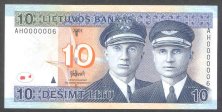
10 litu note showing face side
In 1934 Steponas Darius and Stasys Girėnas bodies were embalmed by professor Jurgis Zilinskas. In 1936 the Lithuanian government decided to build a mausoleum for them in Kaunas' old cemetery, that was destroyed after Soviet re-occupation. From then until the present day, the wreckage of Lituanica has been on display in the Vytautas the Great War Museum in Kaunas. At present the pilots' bodies rest in the Military Cemetery of Šančiai, Kaunas.
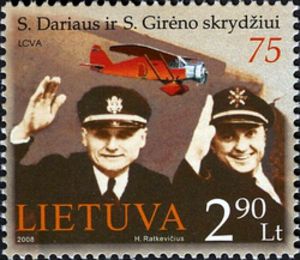
Pašto ženklas, 75th anniversary of
S. Darius and S. Girenas flight.
Chicago's Lithuanian community erected an Art Deco Monument commemorating the pilots in Chicago's Marquette Park in 1935 where it still stands to this day.
Feliksas Vaitkus flight was inspired by the flight and commemorated it with a flight of Lituanica II in 1935.
The flight is commemorated in a movie Skrydis per Atlantą (Flight over Atlantics - 1983). Kaunas's sports stadium, S.Darius and S.Girėnas Stadium where the Lithuanian national soccer team plays its home matches is also named in their honor. There is a tall stone monument near the stadium, the Lithuanian Academy of Sport and the Ąžuolynas Park dedicated to the pilots.
Sculptor Bronius Pundzius has made a relief of the pilots' faces on the Puntukas, then the largest known boulder in the territory of Lithuania in 1943.
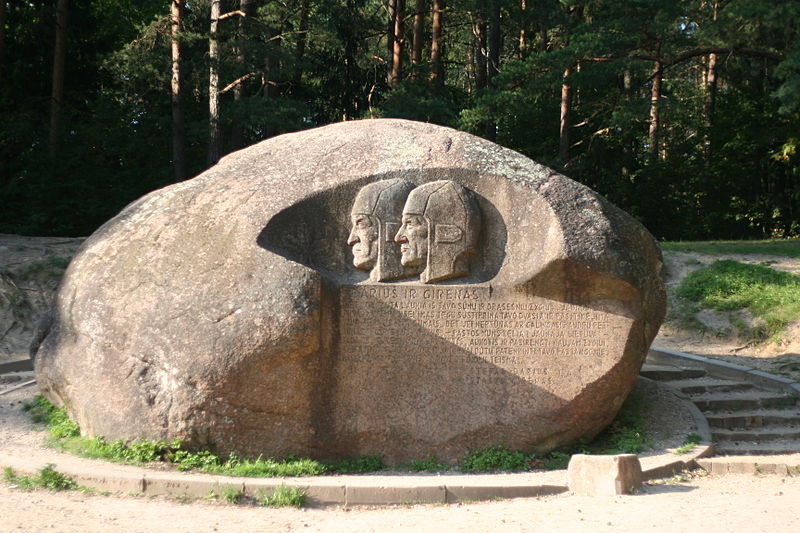
Relief at the Puntukas boulder, 1943.
- Bookmark :
- Digg
- del.icio.us
- Stumbleupon
- Redit it
- Posted by - (1) Comment
The biggest sin a manager
can commit is doing nothing
SEMINAR:
Enterprise management in unstable economy:
What is important for you as a manager to know?
Hotel Villon le Meridien, 29 September, 9 a.m. – 5 p.m.
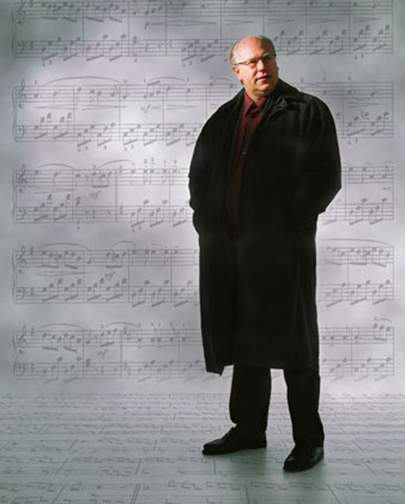
By Ulf Hallan, President of European Leadership Institute
If you are going to participate in one seminar this autumn, let it be this one. Not for yourself, but for the future of your company!
The dark clouds are arising again over the World Economy. Uncertainty and fear of the future do not only scare the World Leaders. They are trying to act now to save us from a new recession.
This situation does not only call for action from politicians. You, as a manager have a responsibility to make the right decisions now for your company.
But what are the right decisions? Should we cut costs or invest? Should we downsize or expand? What are the most necessary actions to be taken by you as a manager in the current situation?
Some say that the biggest sin a manager can commit is doing nothing. Your actions today have their consequences a year from now. And maybe in two and three years.
This is not going to be a listening seminar. You must be prepared to take part in the group and plenary discussions. Sharing your thoughts and actions. As we do have some non-Lithuanian speakers (their introductions will be translated), we will also have one or two English speaking working groups. Please check if you wish to take part in one of these and brush up your English. All other groups will work in Lithuanian language.
This seminar is intended for managers who have the responsibility of their company’s future. Weather you run a production company, an IT or Telecom company, a hotel or a service provider, this seminar will help you address the two most important questions:
· What is happening out there?
· What should I do in this situation?
European Leadership Institute invites you to the interactive seminar
Enterprise management in unstable economy:
What is important for You as a manager to know?
Location and place
Hotel Villon le Meridien, September 29, 9 a.m. – 5 p.m.
Price 320 LTL +PVM
SPEAKERS
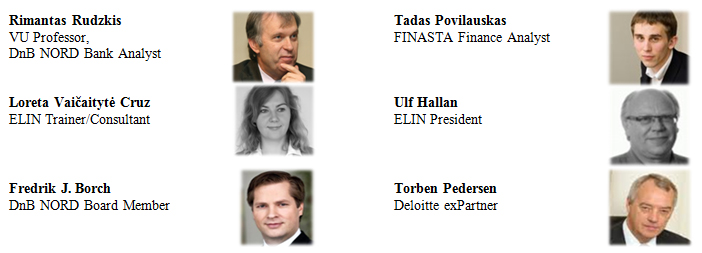
How much risk can You take in today’s unstable economy? What should You be aware of? How can You make early forecast of the trends and be ahead of Your competitors? How can You make better informed decisions? What is the best strategy in Your sector now?
Case studies from Lithuanian companies. How have Lithuanian companies dealt with the economic crisis and recession? What were successful and doomed strategies? What is the current situation in the share market and what can You expect tomorrow?
How to design a good business strategy? Most of good strategies on paper fail, how to implement it well? How to integrate quality, personnel and performance management? How do You stimulate collaboration instead of competition between departments? How do You ensure flexibility and fast decision making, what is vital for business now?
The connections between local and global economy, linkage between share market and real economy, the long-term perspectives for Lithuanian economy. What can you expect in your sector? What should you take into account?
COME, DISCUSS, REFLECT AND FIND THE ANSWERS!
Program
9.00-9.15 Presentation of ELIN (Ulf Hallan, ELIN)
9.15-9.30 Introduction (Loreta Vaičaitytė, ELIN)
9.30-10.30 Risk management: recommendations by Fredrik Borch, DnB NORD
10.30-10.45 Coffee break
10.45-11.45 Lessons and examples from the economic crisis: analysis by Tadas Povilauskas, Finasta
11.45-12.15 Group discussion (Loreta Vaičaitytė, ELIN)
12.15-13.15 Lunch break
13.15-14.15 Integration of internal processes (Loreta Vaičaitytė, ELIN)
14.15-14.45 Individual reflection: structured analysis of your enterprise (Loreta Vaičaitytė, ELIN)
14.45-15.00 Coffee break
15.00-16.00 Long-term Lithuanian business perspectives (Rimantas Rudzkis, DnB NORD)
16.00-16.45 New opportunities and innovative business solutions (Rimantas Rudzkis, DnB NORD, Torben Pedersen, Deloitte & Loreta Vaičaitytė, ELIN)
16.45-17.00 Discussion and conclusions (Loreta Vaičaitytė, ELIN)
The seminar language will be Lithuanian. However, we hope to have one English work group.
If you would like to register, please call 861292665 or write to us info@elin.lt
- Bookmark :
- Digg
- del.icio.us
- Stumbleupon
- Redit it
- Posted by - (0) Comment
A manager’s biggest sin is doing nothing
SEMINAR:
Enterprise management in unstable economy:
What is important for you as a manager to know?
Hotel Villon le Meridien, 29 September, 9 a.m. – 5 p.m.

By Ulf Hallan, President of European Leadership Institute
If you are going to participate in one seminar this autumn, let it be this one. Not for yourself, but for the future of your company!
The dark clouds are arising again over the World Economy. Uncertainty and fear of the future do not only scare the World Leaders. They are trying to act now to save us from a new recession.
This situation does not only call for action from politicians. You, as a manager have a responsibility to make the right decisions now for your company.
But what are the right decisions? Should we cut costs or invest? Should we downsize or expand? What are the most necessary actions to be taken by you as a manager in the current situation?
Some say that the biggest sin a manager can commit is doing nothing. Your actions today have their consequences a year from now. And maybe in two and three years.
- Bookmark :
- Digg
- del.icio.us
- Stumbleupon
- Redit it
- Posted by - (0) Comment
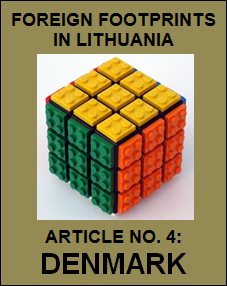
Lithuania has an amazing 700-year history as an international melting pot. This has been especially evident since 1323, the year Grand Duke Gediminas founded Vilnius as Lithuania’s capital city and immediately decided to invite merchants, craftsmen, bankers, farmers, and soldiers from all Europe to come to the new capital, guaranteeing all freedom of beliefs and good working conditions. Vilnius became international, though with less of German or Scandinavian influence, as one could expect, rather influenced by Italy and Mediterranean ideas – greatly different from the other two Baltic capitals where Hanseatic influence became dominant.
VilNews will over some time this autumn publish articles about impacts of foreign nations and cultures here. We also welcome you, dear readers, to share with us information you may have about ‘foreign footprints in Lithuania’.
THE DANES AND THE BALTS
A thousand years of coexistence
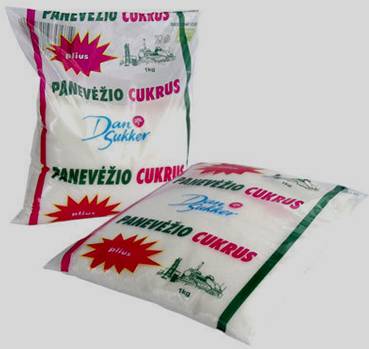
Danish sugar produced in Lithuania.
Text: Kaare E. Janson
From the time of the Vikings, more than a 1000 years ago, the neighbouring Baltic Sea and the various ethnic tribes that lived about its shores attracted the interest of the seafaring Danes. In due course trade with these tribes began. But it was a bellicose time when stronger nations sought to extend their domains by conquest. These pagan tribes possessed great forests and to lay claim to them the Danes fought the Germans, the Swedes, the Finns, the Russians, the Estonians, the Latvians, the Prussians, and the Poles - but never the Lithuanians. In fact, after Europe recognized Lithuania as an independent state and even later, when it formed a union with Poland, Lithuania and Denmark from time to time formed alliances to defend themselves from their common foes – the Germans, the Swedes, and the Russians.
- Bookmark :
- Digg
- del.icio.us
- Stumbleupon
- Redit it
- Posted by - (4) Comment

Lithuania has an amazing 700-year history as an international melting pot. This has been especially evident since 1323, the year Grand Duke Gediminas founded Vilnius as Lithuania’s capital city and immediately decided to invite merchants, craftsmen, bankers, farmers, and soldiers from all Europe to come to the new capital, guaranteeing all freedom of beliefs and good working conditions. Vilnius became international, though with less of German or Scandinavian influence, as one could expect, rather influenced by Italy and Mediterranean ideas – greatly different from the other two Baltic capitals where Hanseatic influence became dominant.
VilNews will over some time this autumn publish articles about impacts of foreign nations and cultures here. We also welcome you, dear readers, to share with us information you may have about ‘foreign footprints in Lithuania’.
THE DANES AND THE BALTS
A thousand years of coexistence
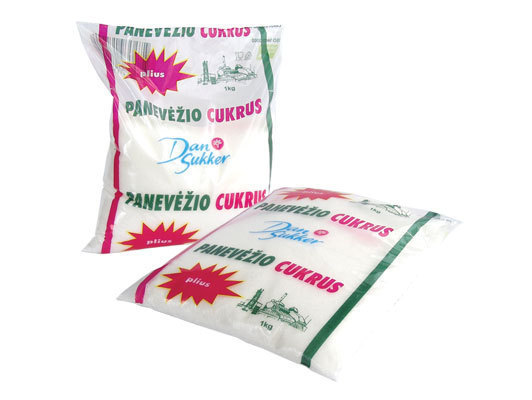
Danish sugar produced in Lithuania.
Text: Kaare E. Janson
From the time of the Vikings, more than a 1000 years ago, the neighbouring Baltic Sea and the various ethnic tribes that lived about its shores attracted the interest of the seafaring Danes. In due course trade with these tribes began. But it was a bellicose time when stronger nations sought to extend their domains by conquest. These pagan tribes possessed great forests and to lay claim to them the Danes fought the Germans, the Swedes, the Finns, the Russians, the Estonians, the Latvians, the Prussians, and the Poles - but never the Lithuanians. In fact, after Europe recognized Lithuania as an independent state and even later, when it formed a union with Poland, Lithuania and Denmark from time to time formed alliances to defend themselves from their common foes – the Germans, the Swedes, and the Russians.
During the Middle Ages crusades were launched in Western Europe to Christianize these pagan Balts. Joining a crusade had its benefits: those who perished were assured of eternal salvation, and apart from the spiritual good that came from converting these heathens, there were temporal perks for the less spiritually inclined -- plunder, land for the grabbing, and women to ravish at the end of each battle.
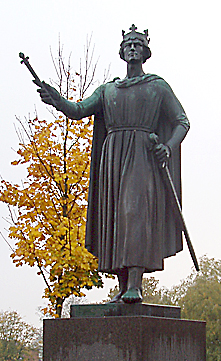
Statue of Valdemar the Great in the town square
of Ringsted, Denmark. Reign: 1157-1182.
In 1161 Danish King Valdemar I (“The Great”) led a naval expedition to the Palanga area where a trading post was founded. However, the real purpose of his trip was to personally check the feasibility of this site for such a crusade. The king was wise; it is always better to look before you leap. However, the Danes decided against a Lithuanian crusade. Was it because each side liked the other or because the Lithuanians appeared too tough to fight? Whatever the reason, the Danes launched their crusade further west and north, leaving Lithuania for the German crusaders from Prussia and Latvia to conquer though their attempts would prove futile.
The Danish crusaders had far greater success: they conquered the Baltic coast from Lübeck to Prussia (the current Kaliningrad area) and from Riga to Narva. However their success was not sustained; sparsely populated Denmark had no available settlers to colonize the conquered territories. Over time the German crusaders took charge and brought in settlers from more populated Germany. The two most enduring Danish conquests were Estonia and the island of Rügen. Even so, up to the early 14th century Danish King Erik VI was still lord over Riga.
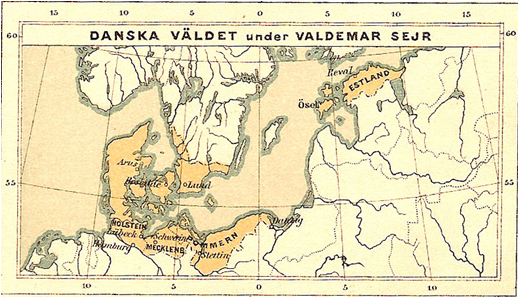
Danish realm under King Valdemar II.
On June 15 in 1219, Danish crusaders under the command of King Valdemar II ("The Victorious") won a decisive battle over Estonia’s heathens. During the final stage of this vicious struggle, legend has it that God granted victory by letting a red banner with a white cross fall from the skies onto the hard-pressed crusaders. Inspired by this divine sign the re-energized Danes won the battle. Estonians who survived this bloody massacre were given the choice of accepting baptism or death by the sword.
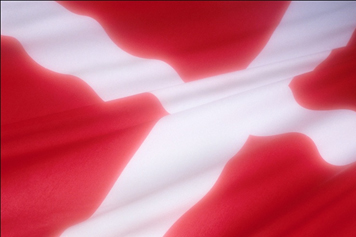
The Danes are indebted to Estonia for their beloved flag, the
Dannebrog, the oldest state flag in the world still in use by an independent nation.
Thus Estonia was turned into a Christian dukedom and the Danish king was made a duke of Estonia. Tallinn, the name of Estonia’s capital, means “walled Danish city” in Estonian, so a legacy from Denmark survives in this name. That striking red banner with its white cross became Denmark’s national flag; it’s the oldest flag in the world, one of the few national flags with its own name – “Dannebrog,” which means “the Danes' red banner.” Also, the highest decoration that Denmark bestows is called “The Order of Dannebrog.” Danes love their beautiful flag; at football matches with foreign teams many Danish spectators paint it on their faces! We are indebted to Estonia for our beloved emblem.
During the 14th century the Danish kings became increasingly concerned over the growing hegemony in trade of the Hanseatic League, a commercial union of cities dominated by Northern Germany who were allied with the Swedish kings. Therefore Denmark downsized its interests in Estonia and Latvia and focused on developing greater ties with Sweden, so as to mobilize all Scandinavian resources to combat the commercial dominance of the Hanseatic League in Northern Europe.
This strategy succeeded and in 1397 King Erik VII, the joint King of Denmark and Norway, went to Kalmar in Sweden to also be crowned the King of Sweden; this marked the start of the Nordic Union. Apart from the three Scandinavian nations, the Nordic Union included Finland, the Danish and Swedish possessions in Estonia and Latvia, the area of present-day St. Petersburg, Iceland, Greenland, and the Faeroe, Shetland, and Orkney islands. But the majority of the Swedish nobility disliked the idea of federation, and in 1523 the Nordic Union ceased to exist; it split into the kingdom of Denmark-Norway and the kingdom of Sweden-Finland.
The Danish presence in the Baltic region ended in 1645 when the Danish king sold his last possession -- the Estonian island of Saarema -- to the Swedes. The Danes realized that it would be too costly to compete with the Swedish and Russian ambitions in the Baltic region, and focused instead on developing colonies in Asia, Africa, and the Caribbean. It was only after the First World War that the Danes briefly became re-involved in the Baltic countries when Danish soldiers helped the Estonians and the Latvians to win their independence.
Thus history shows the absence of military conflicts between Denmark and Lithuania and their relationship over the centuries consisted of trade, trade and more trade. From the days of the Vikings and on into the early Middle Ages, Danes mainly purchased amber, fur pelts and slaves. The amber was dug from Lithuania's beaches; the pelts came from the animals trapped in their vast forests; and the slaves from territories that Lithuania had conquered. Eventually, slaves as a viable commodity ended as Christianity took root in Lithuania.
But other products filled this gap. Ships had become larger and required more sails, so Danish buyers began purchasing Lithuanian flax, hemp, wax, and tar. The flax was used for making massive sails, hemp for making the rope that these bigger ships required, the wax for polishing chores, and the tar for preserving and waterproofing the exteriors of these wooden ships. The Lithuanians enjoyed this trade; Danish silver was always good.
The use of sailing ships as commercial vessels ended in the 19th century; new ships were constructed from metal and powered by steam, and Danish purchases shifted from maritime supplies to horses and milk. Lithuanian horses became highly prized in Denmark for their strength and beauty. Milk as an export greatly increased from 1870 when individual Danish farmers, so as to compete in the market with the larger manorial farms, banded into commercial co-operatives and began the large-scale production of dairy products. This approach was highly successful and by 1900 Denmark had the most modern dairy sector in the world; Danes even went abroad to establish modern dairies elsewhere.
Alas, World War II ended all relations between Lithuania and Denmark. After the Soviet takeover of the Baltic States in 1940, the Danish Embassy in Lithuania ceased to exist. Denmark never recognized the absorption of these countries into the Soviet Union, and the Iron Curtain that the Soviets imposed in the aftermath of World War II, cutting off Eastern Europe from the West, isolated Denmark from its Baltic neighbours.
However, the relentless wheel of history made another big turn fifteen years ago, toppling the Soviet Union and restoring the sovereignty of the Baltic nations. Almost overnight diplomatic relations between Lithuania and Denmark were re-established. Today a lively trade between Lithuanian and Denmark flourishes and almost all sectors are involved. In some years Lithuania sells more to Denmark than Denmark sells to Lithuania. Denmark also is a leading foreign investor in Lithuania. Both nations are members of the European Union (EU), so goods and services move freely.
As both nations are also members of the North Atlantic Treaty Organization (NATO), our time-honoured political and military alliances have been revived. Centuries earlier the Lithuanians and the Danes had joined forces to fight a common enemy; fortunately, there’s no longer any need for that. Instead, as members of the EU and NATO, Lithuanian and Danish soldiers work side by side on peace missions. Let us hope that the relentless wheel of history continues to roll in the right direction.
- Bookmark :
- Digg
- del.icio.us
- Stumbleupon
- Redit it
VilNews e-magazine is published in Vilnius, Lithuania. Editor-in-Chief: Mr. Aage Myhre. Inquires to the editors: editor@VilNews.com.
Code of Ethics: See Section 2 – about VilNews. VilNews is not responsible for content on external links/web pages.
HOW TO ADVERTISE IN VILNEWS.
All content is copyrighted © 2011. UAB ‘VilNews’.

 Click on the buttons to open and read each of VilNews' 18 sub-sections
Click on the buttons to open and read each of VilNews' 18 sub-sections 


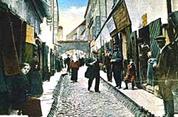






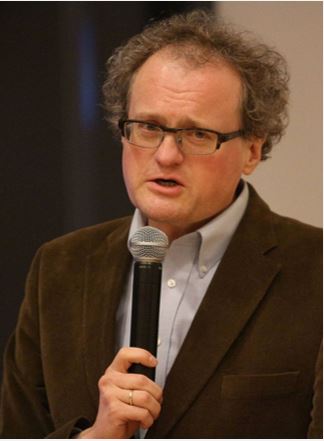
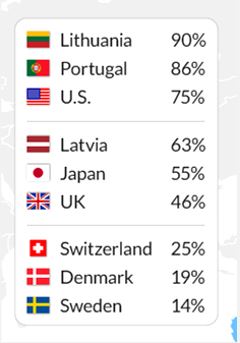
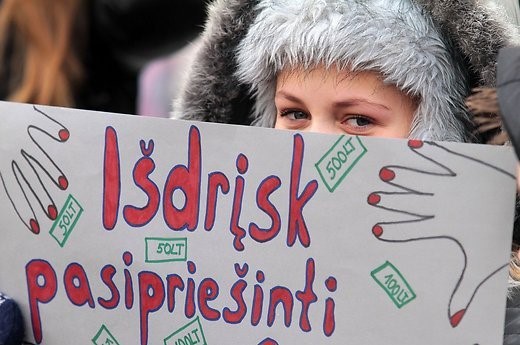


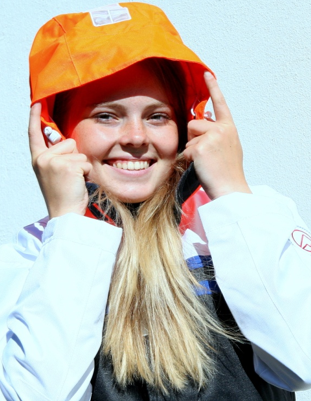
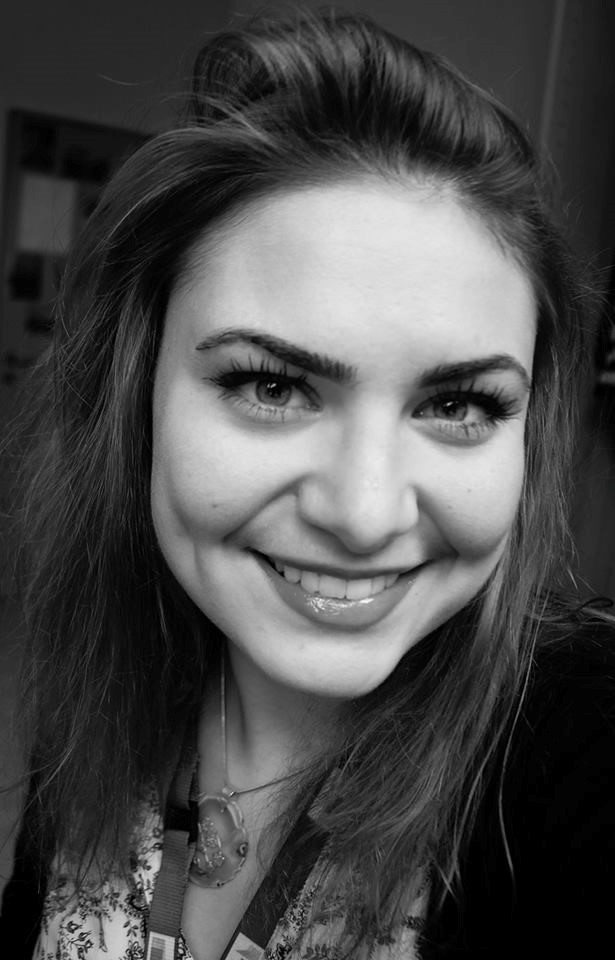
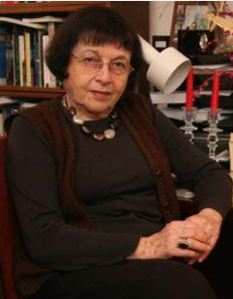
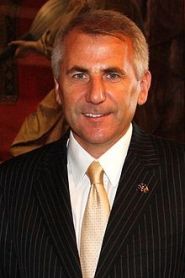
.jpg)
